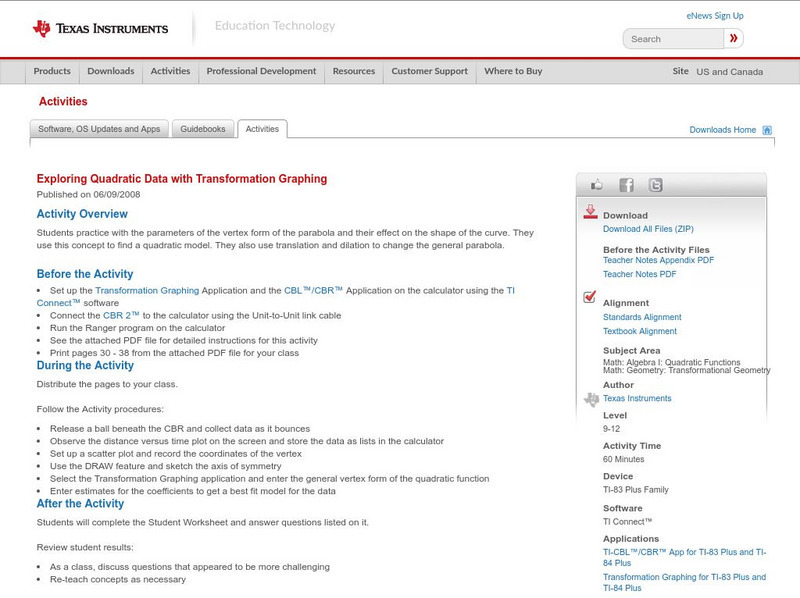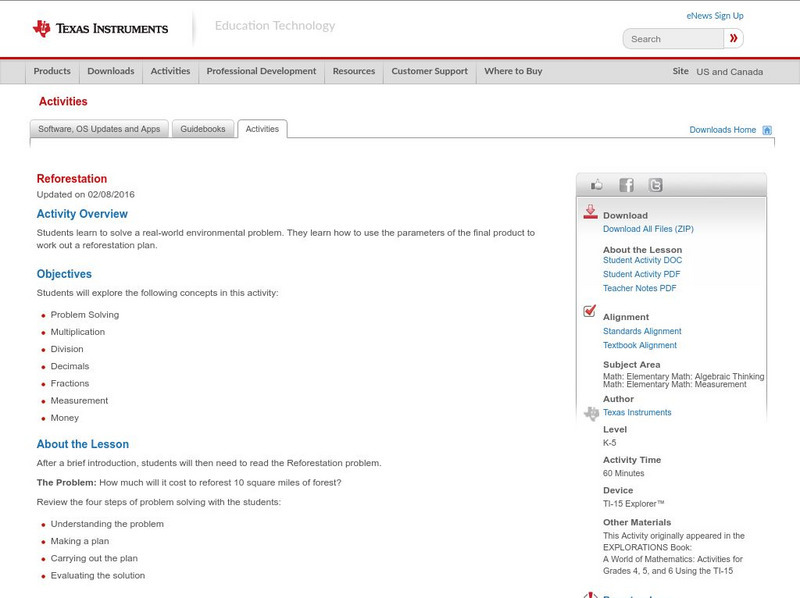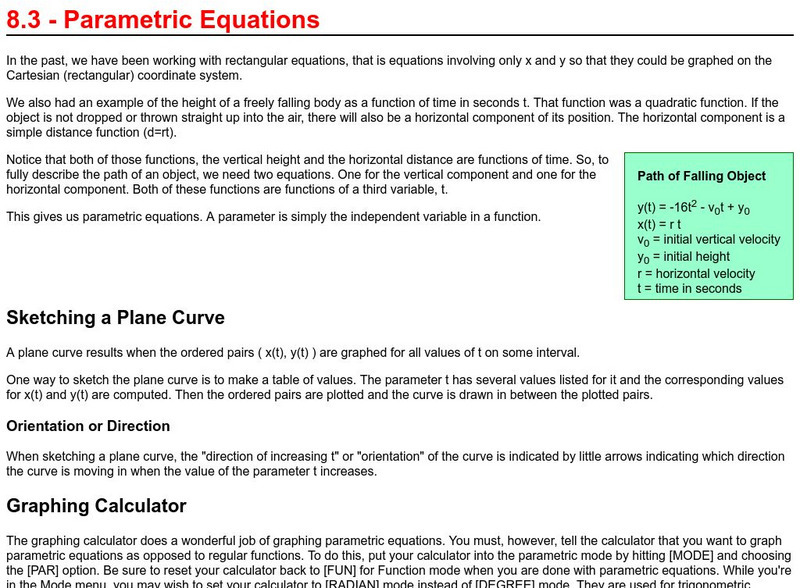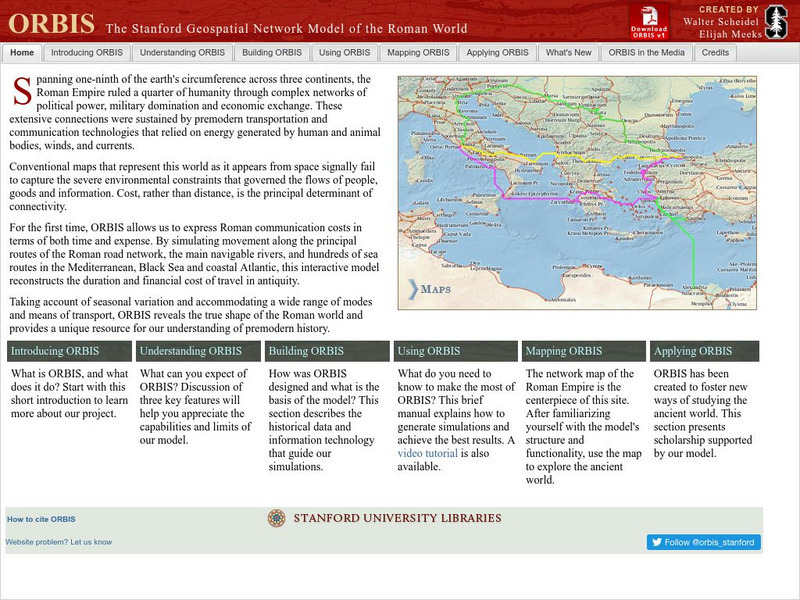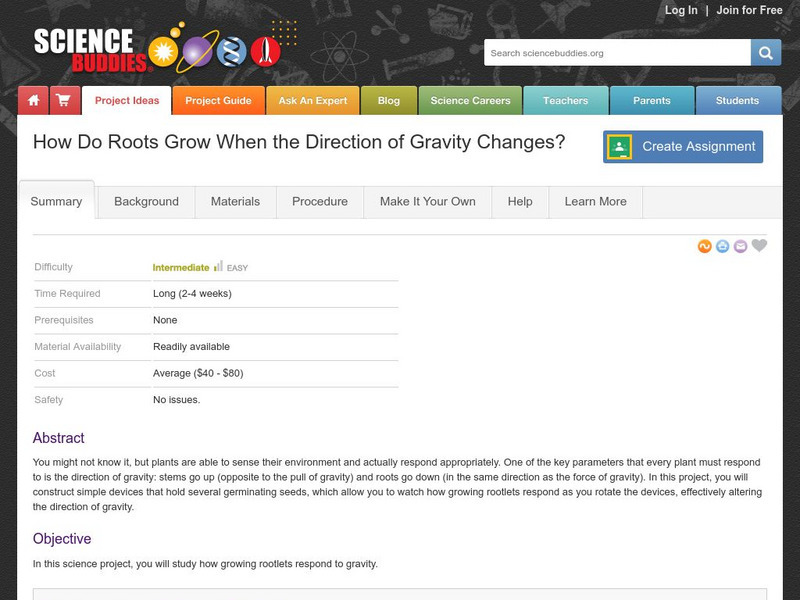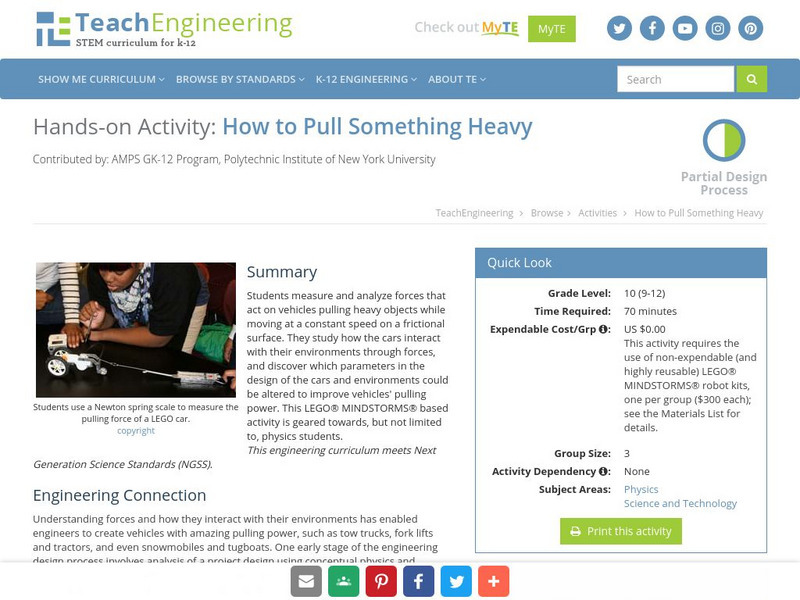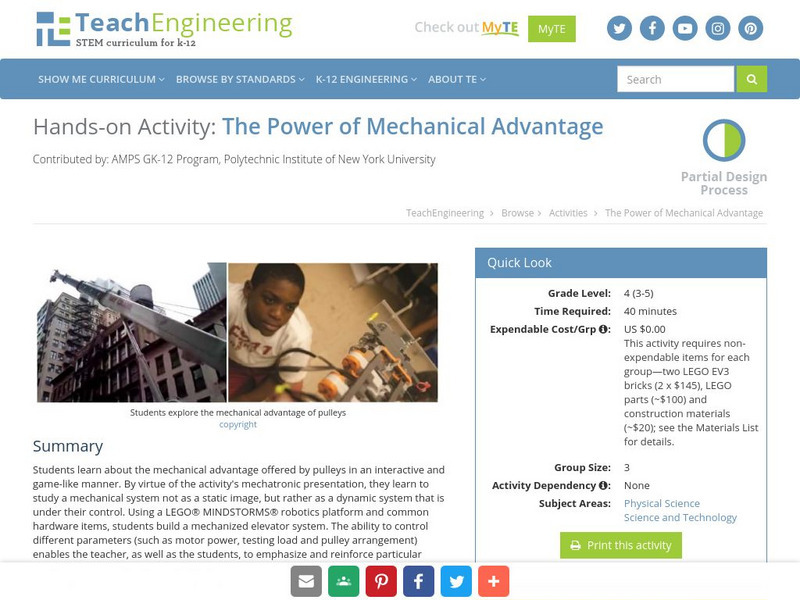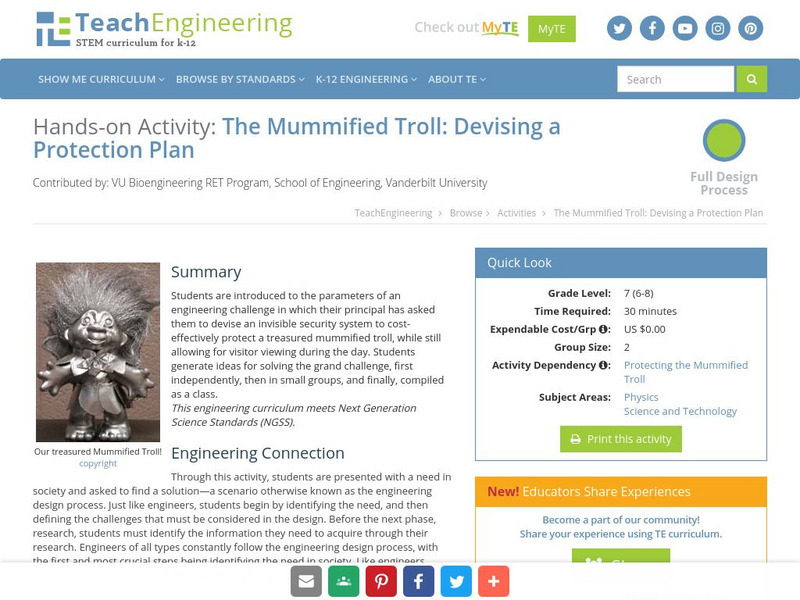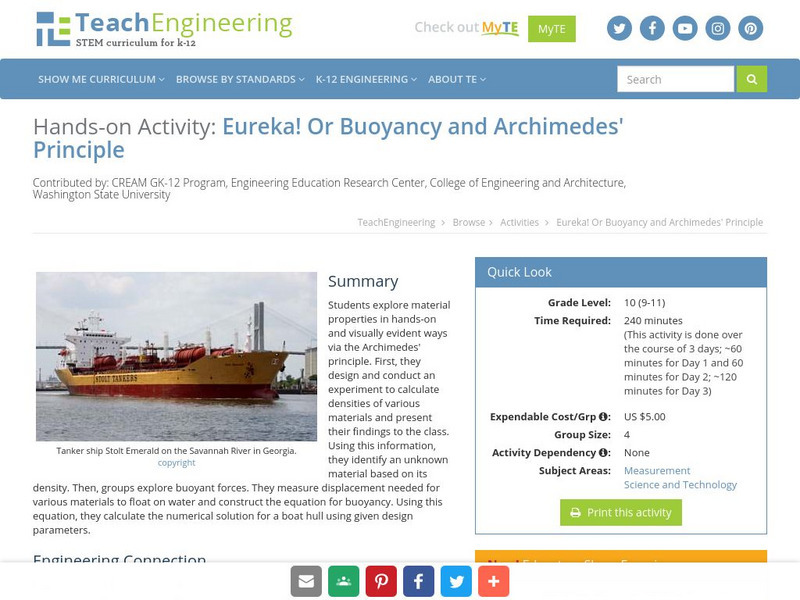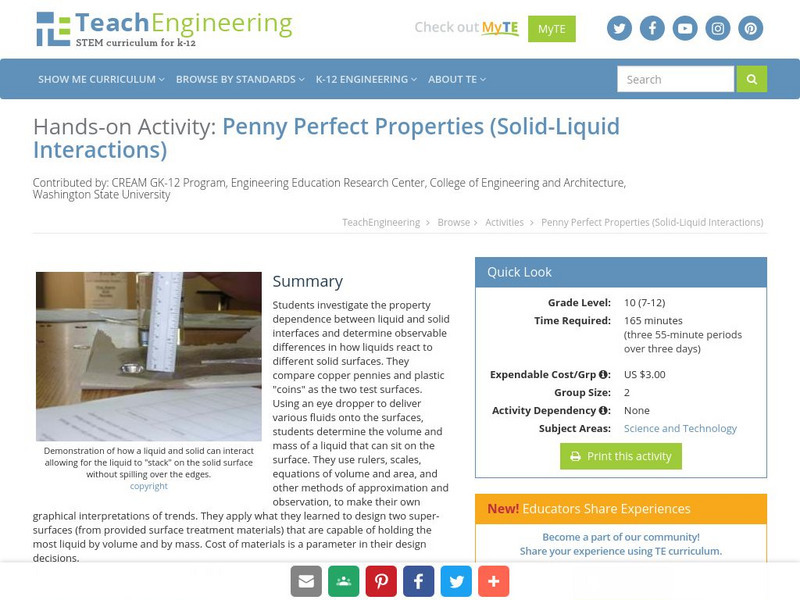Texas Instruments
Texas Instruments: Exploring Quadratic Data With Transformation Graphing
Students practice with the parameters of the vertex form of the parabola and their effect on the shape of the curve. They use this concept to find a quadratic model. They also use translation and dilation to change the general parabola.
Texas Instruments
Texas Instruments: Quadratic Function Investigations
Use the interactive activity below to explore the effect of the parameters a,h,and k on the graph of the general quadratic function f(x) = a(x - h)^2+k.
Texas Instruments
Texas Instruments: Reforestation
In this activity, students learn to solve a real-world environmental problem. They learn how to use the parameters of the final product to work out a reforestation plan.
Texas Instruments
Texas Instruments: Behaviors Quadratic Functions
This StudyCard set teaches and tests on the quadratic function. Shows connection between the function parameters and the resulting geometric behaviors of the quadratic function. Use with Foundations for College Mathematics, ch. 2.5, 9.1.
Richland Community College
Richland Community College: Parametric Equations
This is a discussion of how to graph parametric equations, how to enter them into your calculator, and how to eliminate the parameter. The site has examples to help clarify the concept of eliminating the parameter.
American Association of Physics Teachers
Com Padre Digital Library: Open Source Physics: Schwarzschild Light Impact
Visualization using the Schwarzschild metric, showing the path light travels near a black hole. Adjust the impact parameter and observe effective potential well of the light particle.
Stanford University
Stanford University: Orbis: Stanford Geospatial Network Model of the Roman World
ORBIS is an incredibly complex, and fascinating, geospatial compilation of 751 Roman sites over an area close to 4 million square miles. The model attempts to shed insight into how the Roman Empire functioned as a whole, and how it was...
Science Buddies
Science Buddies: How Do Roots Grow When the Direction of Gravity Changes?
You might not know it, but plants are able to sense their environment and actually respond appropriately. One of the key parameters that every plant must respond to is the direction of gravity: stems go up (opposite to the pull of...
University of Colorado
University of Colorado: Ph Et Interactive Simulations: Atomic Interactions
Explore the interactions between various combinations of two atoms. Turn on the force arrows to see either the total force acting on the atoms or the individual attractive and repulsive forces. Try the "Adjustable Attraction" atom to see...
TeachEngineering
Teach Engineering: How to Pull Something Heavy
Students measure and analyze forces that act on vehicles pulling heavy objects while moving at a constant speed on a frictional surface. They study how the cars interact with their environments through forces, and discover which...
TeachEngineering
Teach Engineering: The Power of Mechanical Advantage
Students learn about the mechanical advantage offered by pulleys in an interactive and game-like manner. By virtue of the activity's mechatronic presentation, they learn to study a mechanical system not as a static image, but rather as a...
TeachEngineering
Teach Engineering: How Far Does the Robot Go?
Students practice their multiplication skills using robots with wheels built from LEGO MINDSTORMS NXT kits. They brainstorm distance travelled by the robots without physically measuring distance and then apply their math skills to...
TeachEngineering
Teach Engineering: The Mummified Troll: Devising a Protection Plan
Students are introduced to the parameters of an engineering challenge in which their principal has asked them to devise an invisible security system to cost-effectively protect a treasured mummified troll, while still allowing for...
TeachEngineering
Teach Engineering: Eureka! Or Buoyancy and Archimedes' Principle
Students explore material properties in hands-on and visually evident ways via the Archimedes' principle. First, they design and conduct an experiment to calculate densities of various materials and present their findings to the class....
TeachEngineering
Teach Engineering: Penny Perfect Properties (Solid Liquid Interactions)
Students investigate the property dependence between liquid and solid interfaces and determine observable differences in how liquids react to different solid surfaces. They compare copper pennies and plastic "coins" as the two test...
TeachEngineering
Teach Engineering: Bernoulli's Principle
Bernoulli's principle relates the pressure of a fluid to its elevation and its speed. Bernoulli's equation can be used to approximate these parameters in water, air or any fluid that has very low viscosity. Young scholars learn about the...
Texas Education Agency
Texas Gateway: Graphing Conic Sections: Ellipses
Given an equation, the student will use parameter changes to graph an ellipse and to identify the changes in the graph of an ellipse.
Texas Education Agency
Texas Gateway: Graphing Conic Sections: Hyperbolas
Given an equation, the student will use parameter changes to graph a hyperbola and to identify the changes in the graph of a hyperbola.
Texas Education Agency
Texas Gateway: Transformations of Exponential and Logarithmic Functions
Given an exponential or logarithmic function, the student will describe the effects of parameter changes.
Chemistry Collective
Chem Collective: Spectroscopic Simulator
A simulation of the vibrational/rotational spectrum of a diatomic molecule (for physical chemistry courses). This simulation of an infra-red spectrometer allows students to adjust the experimental and molecular parameters and observe the...
Annenberg Foundation
Annenberg Learner: The Habitable Planet: Ecology Lab
Create the parameters of your own ecosystem by choosing which producers and consumers live there. Visualize how the food web operates and species populations change. This simulator mimics the food web within a typical ecosystem and gives...
CPALMS
Florida State University Cpalms: Florida Students: What Causes Weather?
Determine parameters of weather; including specifically temperature, humidity, precipitation, wind direction and wind speed in this tutorial. During this tutorial, you will relate the jet stream and ocean circulation to the causes of...
NOAA
Noaa: Estuaries 101 Curriculum: Human Impact on Estuaries
Students will make a model of a pollution spill that occurred at Bangs Lake, a tidal lake within the Grand Bay National Estuarine Research Reserve in Mississippi, in April 2005, and measure water quality parameters in their model....
Thomson Reuters
Find Law: Article Iv: Doctrine of the Equality of States
This resource discusses Clause 1, Section 3, in Article IV. It outlines the parameters put in place to ensure that as new states entered the union, power was equitably distributed among all.
Other popular searches
- Changing Parameters
- Parameter Math
- Area and Parameter
- Parameterized
- Parameter Area Volume
- Parameter of the Equation
- Parameter Changes
- Parameters Dictionarycom
- Parameter Form Plane
- Parameter Algebra
- Parameters dictionary.com
- Parameter of Squares


